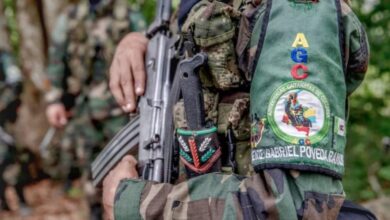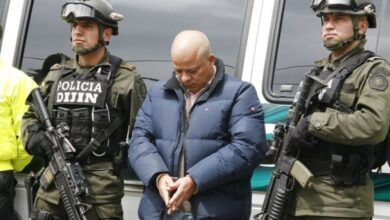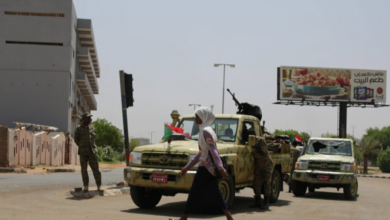In addition to Ingrid Betancourt, many other candidates were also victims of the armed conflict and today they are betting on democracy.
In addition to Ingrid Betancourt, many other candidates were also victims of the armed conflict and today they are betting on democracy.

Fotos: TW-IBetancourtCol, TW-juanmanuelgalan
LatinAmerican Post | María Fernanda Ramírez Ramos
It has been more than 5 years since the Peace Agreement was signed in Colombia. However, its implementation has had great difficulties. In this regard, post-conflict management and the implementation of the points of the agreement, in the midst of the aftermath of the crisis caused by COVID-19, is a great challenge for whoever is elected as president this year.
According to the National Center for Historical Memory, in Colombia, there are 268,807 deaths caused by the armed conflict, 37,962 victims of kidnapping, 15,886 victims of sexual violence, and 80,733 forced disappearances. In this regard, a central point of the Agreement is related to victims and reparation processes, the establishment of guarantees of non-repetition, protection of their rights, and opportunities for participation.
Last year, the Government issued decree 1207 of October 5, 2021, which regulated the election of the victims of violence who will have representation in the Chamber with the so-called peace seats. There are 16 places for the periods 2022-2026 and 2026-2030, which will be chosen on March 13. Carlos Ruiz Massieu, head of the United Nations Verification Mission in Colombia, stated that “it is a historic opportunity, provided for in the Agreement, which must be protected to expand Colombian democracy.” According to the newspaper El Colombiano, for these 16 positions, there are around 5,000 victims who aspire to occupy them.
En marzo, los colombianos votarán por un Congreso que incluirá por primera vez representantes de las 16 circunscripciones transitorias especiales de paz. Esta es una oportunidad histórica, prevista en el Acuerdo, que debe ser protegida para ampliar la democracia colombiana. #UNSC pic.twitter.com/110920Amq8
— Carlos Ruiz Massieu (@CGRuizMassieu) January 20, 2022
On the other hand, the Peace Agreement also guaranteed the participation in politics of former FARC combatants, which today make up the Comunes political party. In these elections, they have 17 candidates for the Congress of the Republic, led by Julián Gallo and Sandra Ramírez. However, these will be the last elections in which the Comunes party will have their seats guaranteed, which could mean their last participation in Congress.
And the presidential candidates?
The armed conflict in Colombia has impacted the majority of the country’s population. Therefore, a common trait in most presidential candidates is that they have been victims of violence. Probably the best-known face of the victims of the FARCes is Ingrid Betancourt, who recently joined the electoral contest. In 2002 she was kidnapped by the guerrilla group and her national and international recognition (she is also a French citizen) often made her the face of kidnapping in Colombia. She was rescued in 2008 during Operation Jaque.
The difference between the left of Gabriel Boric and that of Pedro Castillo
However, other candidates also have a history related to the conflict. Kidnappings, torture, attacks, and murders of relatives are part of the stories of the candidates. In the debate for El Tiempo and Semana, candidate Rodolfo Hernández spoke about two tragic events in his family: “The FARC kidnapped my father and the ELN kidnapped my daughter and killed her.” His testimony gave way to the story of other candidates. Alejandro Gaviria recalled that his brother Pascual Gaviria was also kidnapped by the FARC in 1998.
On the other hand, Juan Fernando Cristo’s father, Jorge Cristo Sahiun, was a political leader in Norte de Santander who assassinated the ELN in 1997. Likewise, he is It is well known that Juan Manuel Galán is the son of politician Luis Carlos Galán, assassinated in 1989 when he was a presidential candidate.
Of the candidates for the Historical Pact, Francia Márquez has suffered attacks for her work as an environmental activist. In fact, in various interviews, he has recalled how difficult it has been to have to get away from his children to protect them. Likewise, Arelis Uriana has received threats to her life and that of her family for her work as a defender of indigenous peoples and women.
Gustavo Petro is a former member of the M-19, for which many see him as a victimizer. In other words, their presence and popularity in the elections are a testimony of how the transition from guerrilla groups to political groups is possible. However, he was also a victim of torture by the Army while he was imprisoned: “Without eating, almost without water, extremely weak, they beat me every two hours and asked me the same questions. Once they put an electric current on my chest, they hung me, they sat me under a drop of water that always fell on the same place on my head”, he said in a chronicle published in Soho Magazine.
These are exceptional elections for the history of the country because they are in a post-conflict period with many complexities in the application of the Peace Agreement. Undoubtedly, the next president will have to face the systematic assassination of social leaders and ex-combatants of the FARC, the growth of dissidence, the possible dialogues with the ELN, and a drug policy that will make it possible to stop the wave of violence caused for drug trafficking.





